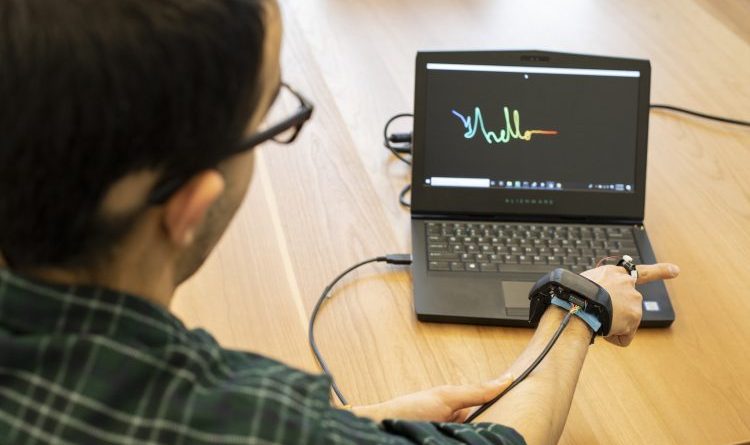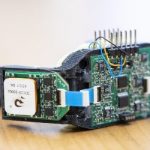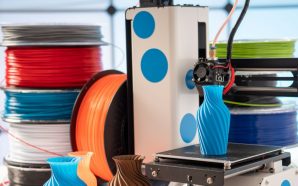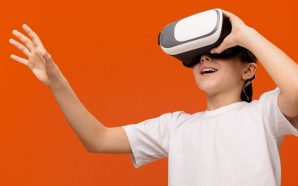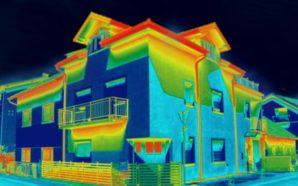Smart technology keeps getting tinier. There are smartwatches, smartphones and now, smart rings, devices that let someone use simple finger gestures to run other technology.
Researchers from the University of Washington have made AuraRing, a ring and wristband combination that can detect the exact location of someone’s index finger and regularly track hand movements. The ring releases a signal that can be picked up on the wristband, which can then detect the position and orientation of the ring — and the finger it’s connected to. The research team published these outcomes Dec. 11 in Proceedings of the ACM on Interactive, Wearable, Mobile and Ubiquitous Technologies.
“We’re deliberating about the next generation of computing platforms,” said co-lead author Eric Whitmire, who completed this study as a doctoral student at the Paul G. Allen School of Computer Science & Engineering. “We wanted a tool that catches the fine-grain manipulation we do with our fingers — not just a signal or where your finger’s pointed, but something that can trail your finger completely.”
AuraRing is made up of a coil of wire wrapped 800 times around a 3D-printed ring. A current running through the wire produces a magnetic field, which is detected by three sensors on the wristband. Based on what values the sensors perceive, the researchers can continuously find the exact position of the ring in space. From there, they can decide where the user’s finger is located.
- The ring in AuraRing (left) is made of a coil of wire wrapped 800 times around a 3D printed ring. The AuraRing wristband (right) uses three sensors (one shown here: white box in the lower left) to pick up the magnetic field produced by the ring. Credit: Dennis Wise/University of Washington
“To have constant tracking in other smart rings, you’d have to stream all the data using wireless communication. That part uses a lot of power, which is why a lot of smart rings only identify gestures and convey those specific commands,” said co-lead author Farshid Salemi Parizi, a doctoral student in computer and electrical engineering. “But AuraRing’s ring usees only 2.3 milliwatts of power, which generated an oscillating magnetic field that the wristband can continuously sense. In this way, there’s no requirement for any communication from the ring to the wristband.”
With continuous tracking, AuraRing can detect handwriting — possibly for short responses to text messages — or permit someone to have a virtual reality avatar hand that copies what they’re doing with their actual hand. Besides, because AuraRing uses magnetic fields, it can, however, track hands even when they are out of view, such as when a user is on a packed bus and can’t reach their phone.

AuraRing can let someone have a virtual reality avatar hand that copies what they’re doing with their actual hand. Dennis Wise/University of Washington
“We can also easily detect flicks, taps or even a small pinch versus a big pinch,” Salemi Parizi said. “This gives you extra interaction space. For instance, if you write ‘hello,’ you could use a pinch or a flick to send that data. Or on a game like Mario, a pinch could make the character leap, but a flick could make them super leap.”
The researchers designed AuraRing to be all set to use the instant; it comes out of the box and not be reliant on a specific user. They tested the system on 12 applicants with different hand sizes. The team matched the actual location of a participant’s finger to where AuraRing said it was. Much of the time, the system’s tracked location agreed with the exact location within a few millimetres.
This wristband and ring combination could be useful for more than smartphones and games, the team said.
The team has a linked project called Aura, a small controller for mobile VR devices that has the location-tracking accurateness of desktop VR devices.
“Because AuraRing constantly monitors hand movements and not only gestures, it gives a rich set of inputs that many industries could take advantage of,” said senior author Shwetak Patel, a professor in both the computer and electrical engineering department and the Allen School. “For instance, AuraRing could detect the start of Parkinson’s disease by tracking slight hand tremors or help with stroke therapy by providing a response on hand movement exercises.”
The technology behind AuraRing could be simply added to smartwatches and other wristband devices, according to the team.
“It’s all about superpowers,” Salemi Parizi said. “You would still have all the abilities that today’s smartwatches have to propose, but when you want the added benefits, you just put on your ring.”
This research was sponsored by UW Reality Lab, Google, Facebook and Futurewei.
Source: University of Washington




